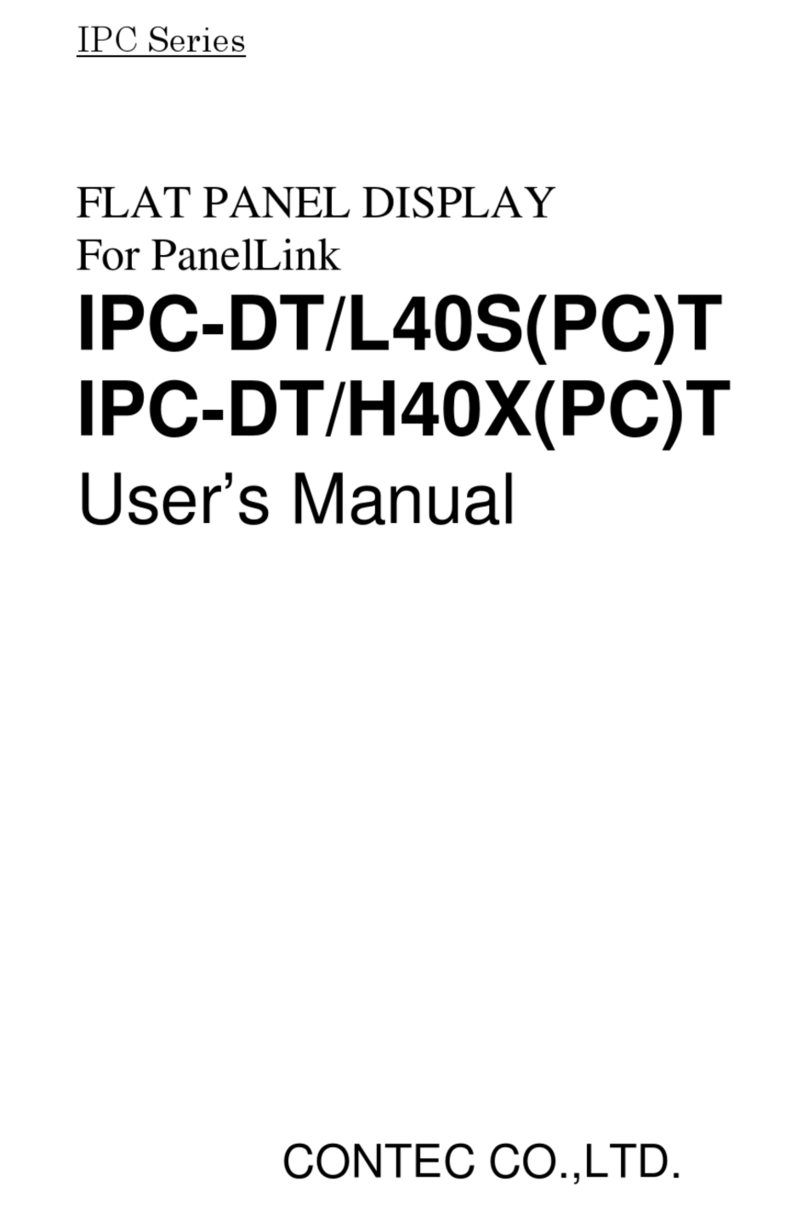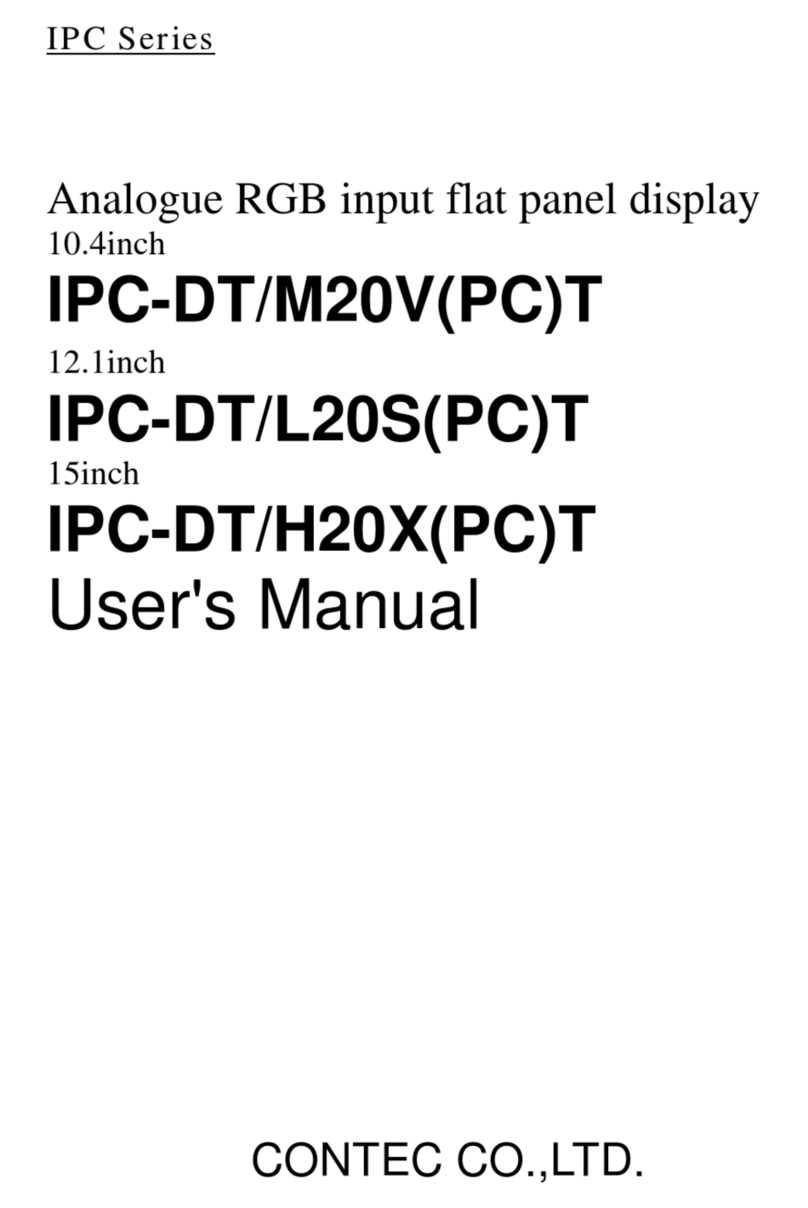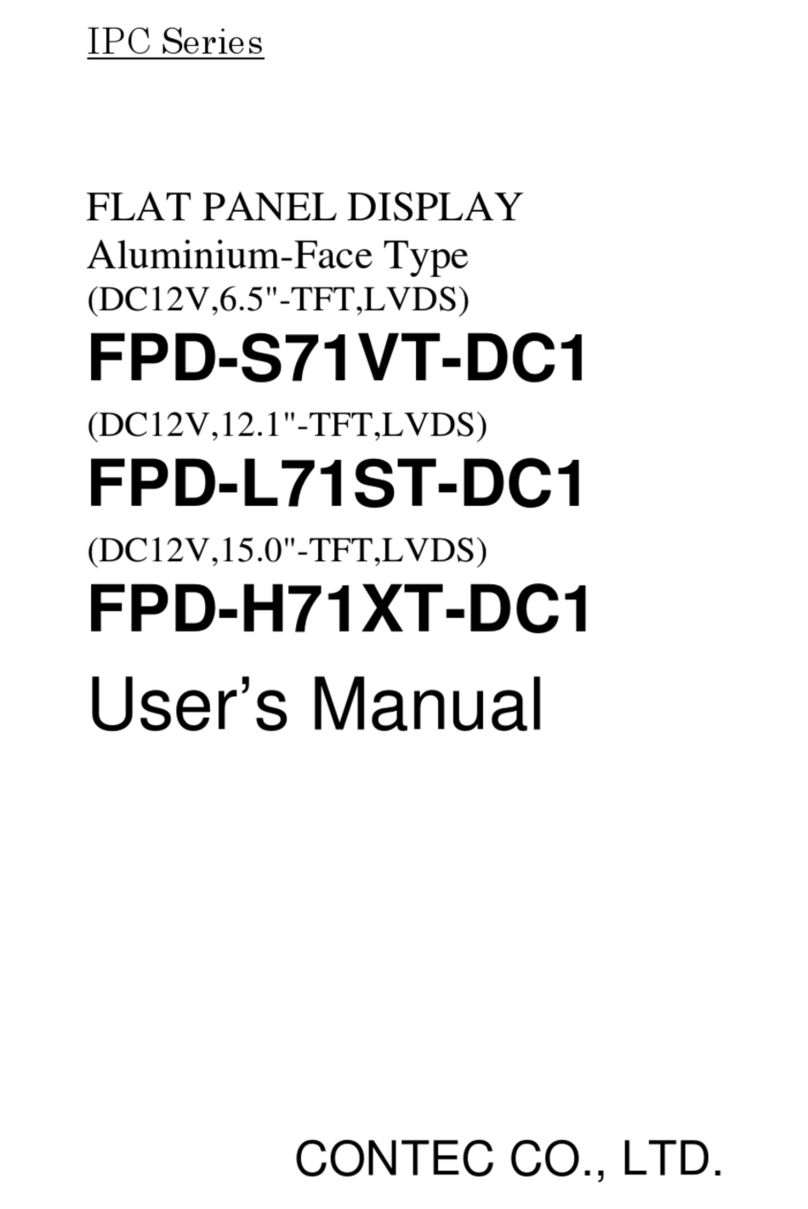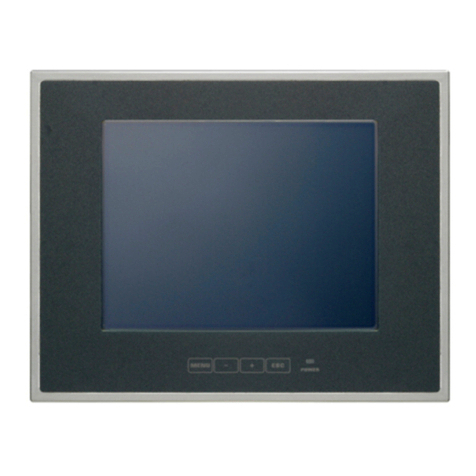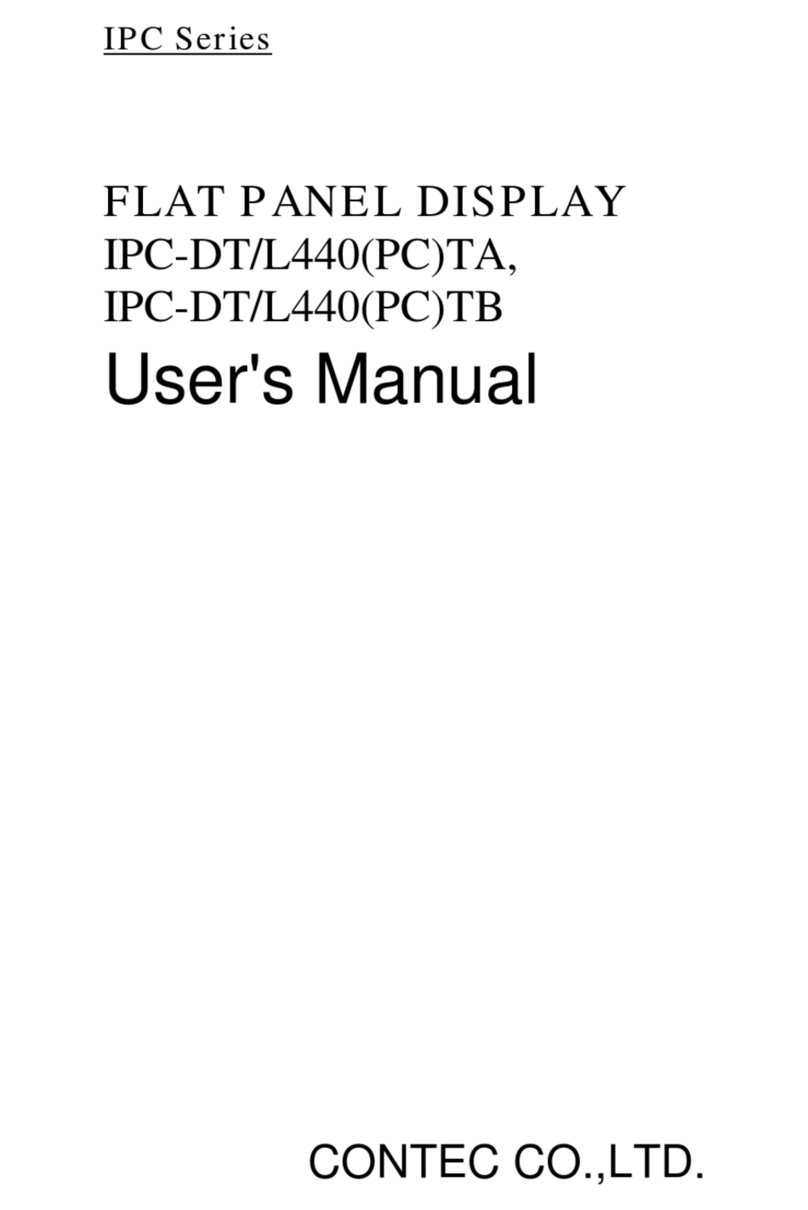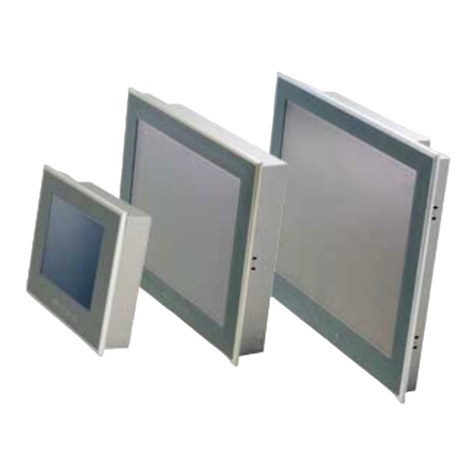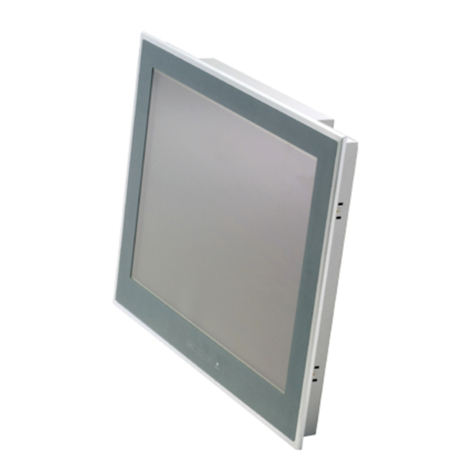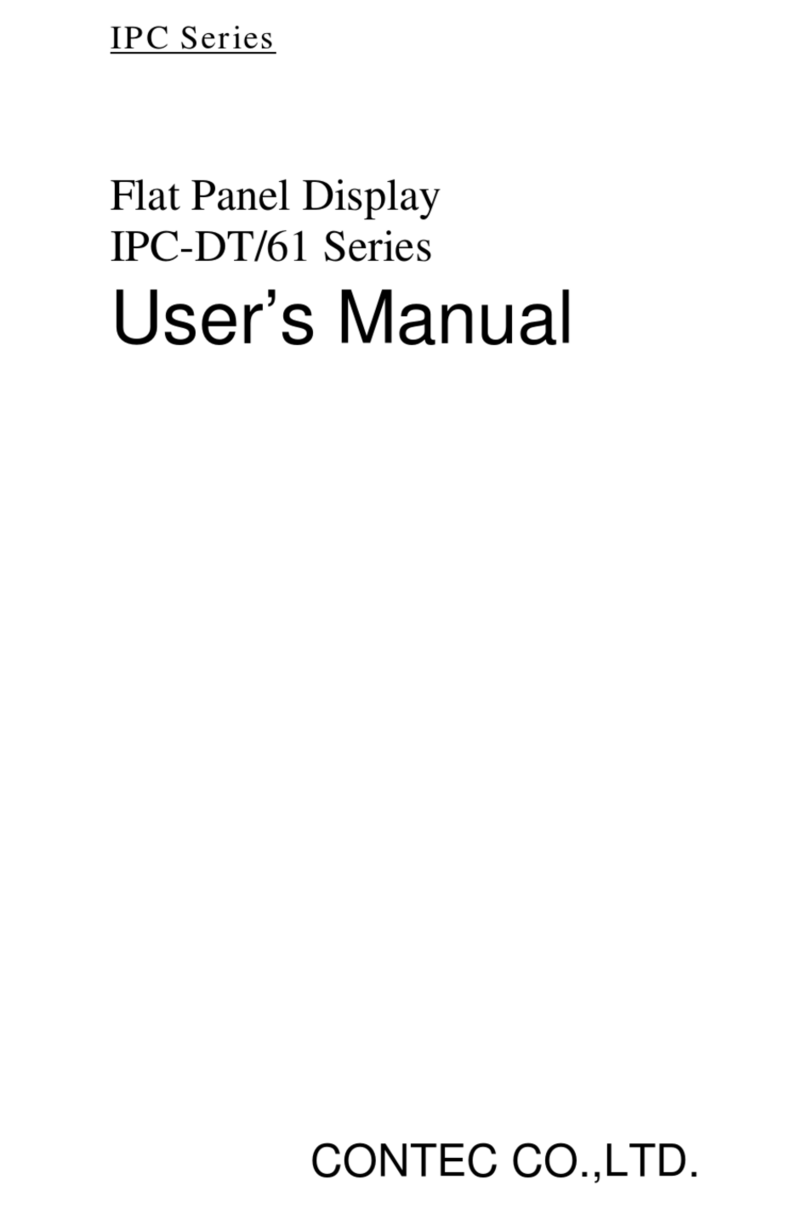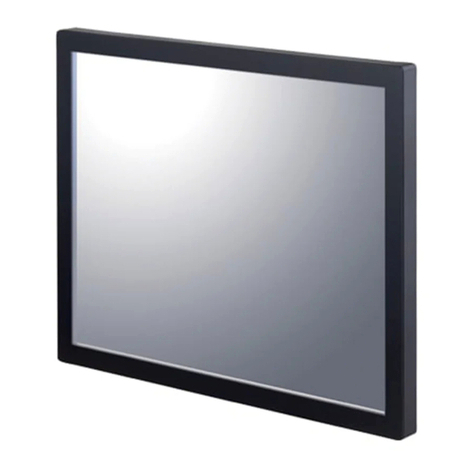PM10 PALM ECG MONITOR
Foreword
Thank you very much for purchasing the PM10 Portable ECG Monitor.
This user manual introduces detail product information about its character, require-
ment, structure, performance, specication, appropriate methods of transportation,
installation, usage, operation, repair, maintenance and storage, and safety measures of
how to protect the operator and product. Please read details in the following chapters.
Please read the user manual carefully before using the product and strictly follow its
regulations to operate. The user manual indicates the operations that users need to
pay much attention to, that may lead to abnormality, or may danger to the device or
human body during using. Our company will not response the security, reliability and
performance for any abnormality or device and human body damage caused by not
following this user manual to use, maintain and store, nor provide free service for any
situations above.
We apologize for the content in the manual is subject to change according to product
upgrades without notice.
The product is reusable as a medical instrument.
Warning:
• The reliability depends on whether users are following the operation and mainte-
nance in the user manual or not.
• Our company’s website: http://www.contecmed.com is the unique route for down-
loading APP software and PC software, also the updates of rmware, if user down-
load software and rmware updates from other unauthorized channels , it will cause
the risks associated with cyber security, our company will not take responsibility for
the consequence it may cause.
• All servicing and future upgrade to the device must be carried out by personnel
trained and authorized by our company, and using the original ttings for mainte-
nance. The schematic diagram and component list can only be provided to the ser-
vice station or maintenance personnel designated by our company.No modication
of this equipment is allowed.
• User should be aware of life-circle of battery, discard the battery in accordance with
local laws when the life-circle of battery expire.
• MR-unsafe!
Do not expose the device to a magnetic resonance (MR) environment.
- The device may present a risk of projectile injury due to the presence of ferromag-
netic materials that can be attracted by the MR magnet core.
- Thermal injury and burns may occur due to the metal components of the device
that can heat during MR scanning.
- The device may generate artifacts in the MR image. The device may not function
properly due to the strong magnetic and radiofrequency elds generated by the
MR scanner.
This user manual contains proprietary information, which is protected by copyright.
All rights reserved. Reproduction, adaption or translation, for any part of the manual
without prior written permission, is prohibited.
Our company takes the responsibilities as follows:
1. To provide qualied products according to enterprise standard for users.
2.
To provide services of installation, debugging and training according to the contract.
3. To provide one year warranty and product maintenance after warranty period ac-
cording to the contract.
4. To respond user’s requests in time.
Chapter 1 Notice
1.1 Indication for Use
The device is a handheld, personal electrocardiograph unit, which can measure elec-
trical activities of the heart easily and conveniently. It is immediately available at any
time to manually record transient cardiac events, suitable for home health care use,
which can detect, display and store ECG signal, and if possible, provide average heart
rate message after ECG measurement. The users can use it themselves to check their
heart condition.
It is suitable for the adult users, who suffers from cardio-vascular diseases, or the
adult people who are caring about their heart working conditions during their daily
life. This device is not intended for use as a conventional diagnostic tool, but use as a
healthcare tool which can provide doctor the recorded data as references.
The product is not a conventional diagnostic tool.
1.2 Generic Notice
1) Do not use the device in locations subject to high temperatures or humidity. Use in
the temperature within 5~40˚C and humidity within 25%~80% RH.
2) Do not wash the device with water.
3) Pre-set up time is within 30mins, at condition of:
• Warm from the minimum storage temperature until it is ready to use at ambient
temperature of 20°C.
• Cool from the maximum storage temperature until it is ready to use at tempera-
ture of 20°C.
4) Do not use or store the device in the following ambient conditions:
• Near res or open ames.
• Locations exposed to strong vibration.
• Locations exposed to strong electromagnetic elds.
5) Do not disinfect the device in autoclave or gas sterilizer.
6) Such as skin allergies or skin damage, do not use this device.
7) The device service lift is 3 years. Do not throw away the device and accessories
when they can’t work. If the device needs to dispose, it should meet the local laws
and regulations requirement.
8) lay responsible organization must contact its local authorities to Determine the
proper method of disposal of potentially bio hazardous parts and accessories.
9) Please don’t use multiple wireless devices connected to the product at the same
time.
10) This device is no contraindication.
11) The parameters displayed by ECG should be interpreted by professional physi-
cian.
12) Please don’t use the device for infants weighing less than 10 kg.
1.3 Measurement Notice
1) If your skin is dry, wipe them with disinfectant alcohol or electric salve to strength-
en the electric capability.
2) You are better to comfortably sit, draw yourself up, begin to measure when the
heart rate level off.
3) When measuring, the nger and chest electrodes should touch your skin exactly,
roundly and well.
1.4 Safety Notice
1) No sampling in the battery-charging. (sampling means acquiring ECG data of pa-
tient in the designated anatomical areas.) When the battery is charging, the device
will not record ECG. The following symbol will present on the use interface to
remind the charging state, device cannot be operated in battery charging state.
2) Lay the device in shady and cool environment when you are not going to use it for
a long period of time, and electrify per three months.
3) Do not use the device in the environment placed inammables objects, such as
anesthetic.
4) Other equipment connected with it must meet national safety standards.
5) That conductive parts of ELECTRODES and associated connectors for TYPE BF
APPLIED PARTS including the NEUTRAL ELECTRODE, should not contact other
conductive parts including earth;
1.5 EMC Notice
1) Please note the effect from EMC when using the device, because it can be inu-
enced by portable or movable high electromagnetic compatibility RF devices.
2) This equipment needs to be installed and put into service in accordance with the
information provided in the ACCOMPANYING DOCUMENTS.
3) Wireless communications equipment can affect ME EQUIPMENT and should be
kept at least a distance d away from the equipment. The distance d is calculated
by the MANUFACTURER from the 800 MHz to 2,5 GHz column of Table 5 or Table
6 of IEC 60601-1-2:2014.
1.6 RF Instruction
This device complies with part 15 of the FCC Rules. Operation is subject to the fol-
lowing two conditions:
A. This device may not cause harmful interference;
B. This device must accept any interference received, including interference that may
cause undesired operation.
Any changes or modications not expressly approved by the party responsible
for compliance could void the user’s authority to operate the equipment.
Some electronic devices are susceptible to electromagnetic interference sent by this
equipment if inadequately shielded. Please use this equipment at least 20 cm or as
far as you can from TV set, radio and other automated ofce equipment so as to
avoid interference.
This device is a radio transmitter and receiver. It is designed and manufactured not to
exceed limits for exposure to radio frequency (RF) energy set by the Federal Commu-
nications Commission (FCC) of the U.S. Government. These limits are part of compre-
hensive guidelines and establish permitted levels of RF energy for the general popu-
lation. The guidelines are based on standards that were developed by independent
scientic organizations through periodic and thorough evaluation of scientic studies.
The standards include a substantial safety margin designed to assure the safety of all
persons, regardless of age or health.
This equipment has been tested and found to comply with the limits for a Class B digital
device, pursuant to part 15 of the FCC Rules. These limits are designed to provide rea-
sonable protection against harmful interference in a residential installation. This equip-
ment generates, uses and can radiate radio frequency energy and, if not installed and
used in accordance with the instructions, may cause harmful interference to radio com-
munications. However, there is no guarantee that interference will not occur in a particu-
lar installation. If this equipment does cause harmful interference to radio or television
reception, which can be determined by turning the equipment off and on, the user is
encouraged to try to correct the interference by one or more of the following measures:
A. Reorient or relocate the receiving antenna.
B. Increase the separation between the equipment and receiver.
C. Connect the equipment into an outlet on a circuit different from that to which the
receiver is connected.
D. Consult the dealer or an experienced radio/ TV technician for help.
A minimum separation distance of at least 0.2 m between this equipment and
all persons shall be guaranteed to satisfy the RF exposure compliance.
1.7 Quality of Service and Security
The device assures timely, reliable, accurate, and secure data and wireless informa-
tion transfer by the following design.
When you want to establish wireless connection with the portable ECG monitor, you
must input correct communication instruction. Therefore, unauthorized access to the
ECG data is prevent.
1.8 Intended Operator
Lay Person, with the following requirements:
1. Be able to read and understand the content in the user manual;
2. Be able to distinguish the following anatomic sites: chest, left /right palm, upper
extremity and low extremity.
Chapter 2 Introduction
The portable ECG monitor is designed for family and individual users. It is a good
helper for family members to prevent from cardiovascular disease. The device can
record and display user’s ECG waveform and heart rate anytime at anyplace with
easy operation.
2.1 Characteristic
1) Handsome shape, handy operation, convenient tote.
2) Record real-time heart rate anytime and anywhere.
3) Built-in large capability rechargeable lithium battery, continuously sample 200 ECG
waveform after charged once.
4) QRS intervals and VEB measurement
2.2 Application
1) Occasion: family, medical clinic and hospital. The device can’t be used as a general
electrocardiogram for clinical examination.
2) Object: people under high pressure and workload for long time, heart disease pa-
tients, middle aged and aged people, sub-health people
3) Purpose: The device is only used for heart rate record. Operation method is simple
and less requirement for the operating personnel.
Chapter 3 Primary Technical Orders
3.1 Normal Work Environment
1) Operation environment
• Temperature: +5°C~+40°C
• Relative humidity: 25%~80%
• Atmospheric pressure: 70 kPa~106 kPa
• Power supply: built-in rechargeable lithium battery, voltage: 3.7 V
2) Transportation and storage environment
• Temperature: -40°C~+55°C
• Relative humidity: ≤95%
• Atmospheric pressure: 50 kPa~106 kPa
3.2 Basic Parameters
1) Lead: Standard 3 leads, I II III
2) Calibration voltage: 1 mV±5%
3) Standard sensitivity: 10 mm/mV±5%
4) Amplitude frequency characteristic: standard: 10 Hz; 1 Hz~20 Hz; (+0.4 dB, -3 dB)
5) Noise level: ≤30 μV
6) Input impedance: ≥50 MΩ
7) CMRR: ≥60 dB
8) Scanning speed: 25 mm/s±5%
9) Sampling rate: 250 dots/s
10) HR measurement range: 30 bpm~300 bpm, error: ±1 bpm or 1%
11) Battery Voltage: DC 3.7 V
12) Type of protection against electric shock: Internal power device
13) Degree of protection against electric shock: Type BF applied part
14) Degree of waterproof: IP22
15) Display: 1.77” color TFT-LCD
16) Size: 100 mm (L)*45 mm (W)*15 mm (H)
17) Weight: about 60 g
18) Bluetooth specications:
• Bluetooth protocol: Bluetooth V4.0,Classic and Low Energy
• Operating frequency: 2.4 GHz ISM band
• Modulation: GFSK (Gaussian Frequency Shift Keying)
• Transmitting power: <10 dBm, Class 1
• Sensitivity: -92 dBm at BER <.001 with DH5
• Transfer rate: 1.5 Mbps data throughput
• Safety features: Authentication and encryption
• Support Services: Bluetooth SPP/IAP/HID/OBEX
• Effective RF Radiated Power Output: <10 dB
• Operating Range: 2400 MHz – 2485 MHz
• Bandwidth of Receiving Section: 85 M
19) FCC ID: 2AB0GPM10
Chapter 4 Operation Directions
4.1 The Sketch Map and Components Name
4.2 2 How to Use
There are several measurement methods as shown in the following pictures
Caution: You shall ensure that the electrode fully contact the skin.
4.3 Menu Operations
1) Start-up
Long press the on/off key for 3 seconds, you will hear a beep sound and see the
screen lighting. The device will keep level off when not measuring.
2) Start measurement
After start-up, the device will enter into pre-sample interface. Please use the cor-
rect measurement method as guided, the ECG waveform and heart rate will dis-
played on the screen, as shown in Figure 4.1.The calculation method of heart rate:
number of heart beats without interference in ECG fragment is set as N, then the
calculation formula of heart rate is as follows:
HR=60000/(Sum of R-R intervals during numbers(N) of heart beats/N )
Figure 4.1 Pre-sample Interface
When the waveform becomes stable, the device will start formal sampling automat-
ically, sample time countdown on the bottom right corner begins until nished one
time sample and the color of sample time turns to red. See Figure 4.2:
Figure 4.2 Formal Sample Interface
The device will enter into case review interface after completed sampling. Case
review interface displays the sampling start time and heart rate. See Figure 4.3.
Figure 4.3 Case Review Interface
When the device enters into case review interface, it will display the latest sampled
case. Click the button to review other cases information. The device can store
100 pieces of cases at most. If reaches to the limit, new stored case will cover the
original case, the one that stored at the earliest, piece by piece.
The device will automatically turn to sampling interface to continue if the user hold-
ing the electrode at both ends again when the device is under the case review
interface.
3) Battery Operation Notes
The device can continuously work for more than 2 hours when battery is complete-
ly charged. The cycle life of the battery up to 200 times.
Two method for charging:
(a) Connect the device with a computer by using Micro USB cable, charging com-
pleted after about 2 hours.
(b) Use a Micro USB to connect the device with a power adapter (output current
>500 mA, 5 V), charging completed after about 2 hours.
(c) when the battery is charging, the device will not record ECG. The following
symbol will present on the use interface to remind the charging state, device can
not be operated in battery charging state.
Figure 4.4
Battery display
No. Indicator Description
a full power
bcapacity: 3/4
ccapacity: 1/2
dcapacity: 1/4
eUsing battery, low power, it is recommended to recharge
the battery. The device will automatically shut down.
4) Auto power off
The device will automatically shut down after no operations within 1 minutes.
4.4 PC Sync Software Operation and Communication
1) The intended use of PC software:
PC Management software is intended to be used as supportive software for porta-
ble ECG device, Functions include setting of device parameters (language setting
and acquisition types setting, etc), downloading ECG data from portable ECG
device, data management.
2) PC software Download:
Website: http://www.contecmed.com DOWNLOAD Software
Users can operate in the PC synchronous software according to necessary, which
including sample mode and time setting, upload case, case review, measurement,
etc.
3) Software Installation
Run the setup software, and you can see a window as follows, Click the button
“OK”.
Figure 4.5
Click the button “Next”, and the dialog box in Fig.4.6 shows up, then if you click
“Browse...”, you can set the installation path, otherwise the default installation path
is “C:\ PM10”. Click the button “Next” again, and the dialog box showed in Fig.4.7
shows up. Click “Browse...”, you can reset the apellation in Startup Menu folder,
the default folder will be “PM10”.
Figure 4.6 Figure 4.7
Click the button “install”, and the software will be installed at the appointed posi-
tion. When the installation nished, the dialog box showed in Fig.4.9 shows up.
Figure 4.8 Figure 4.9
Click “Finish” to end installation.
Figure 4.10 Figure 4.11
4) Data Communication
Start the software under the circumstance of no device connected, it will enter to
the following interface shown as Figure 4.12.Turn on the device, insert to USB port,
click “New search”, then the software starts to search the device, shown as Figure
4.13.
Figure 4.12 Figure 4.13
After searching, device information will be displayed in “List” form, including: cases
ID, time length, check time, heart rate, shown as Figure 4.14. Click the button “?”,
you can get help from the operation.
Figure 4.14
5) Operation
• Download case: double-click a case selected to download, or select multi-case,
then click “Download selected” to download these cases, or click “Download
all” to download all cases.
Figure 4.15
• Delete case: select a case or multi-case, then click “Delete selected” to delete
the case selected, or click “Delete all” to delete all cases. To prevent mistake,
before deleting, the system will prompt user, the system will delete the records
after selecting “Yes”..
Figure 4.16
• Firmware upgrade: click “Upgrade”, select a rmware (naming rules: le name_
version.bin, for example: xxx_USB_Vxxx.bin). If the rmware needs to upgrade
from low to high version, then click “OK”. Otherwise “Force Upgrade” should be
selected rstly, then click “OK”. During upgrading, please keep connection state
between the computer and the device.
Figure 4.17
heart rate
sample time
ECG
waveform
